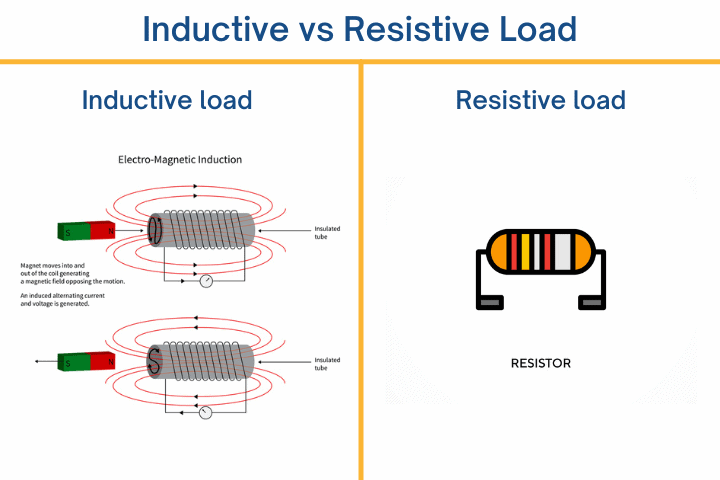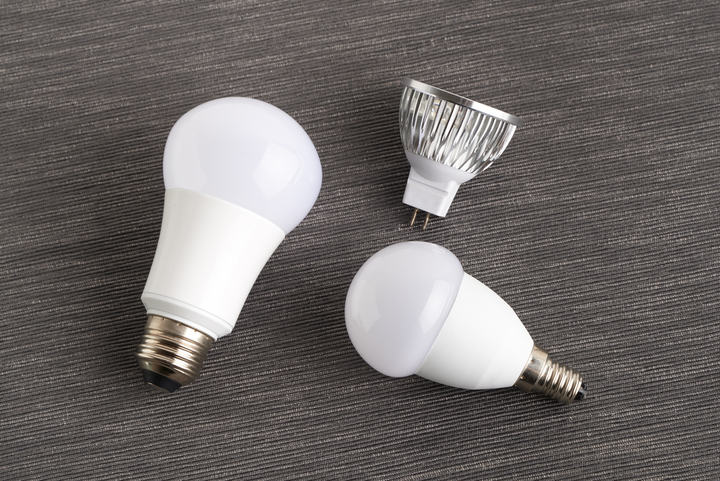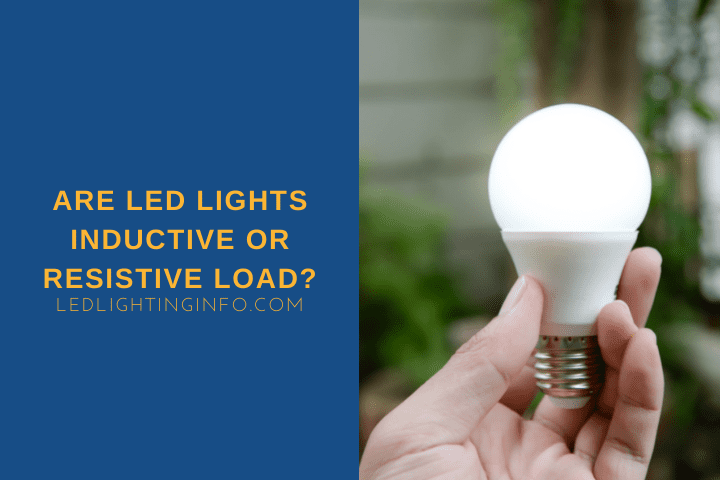Anything powered by an electrical circuit is defined as a “load.” That’s because it is placing a load on the circuit by demanding the current to be powered.
There are different types of loads – inductive and resistive are the two main types, although sometimes people talk about capacitive loads.
Different electrical components, depending on what output they have, can be either inductive or resistive.
So, what about LED lights – what kind of load are they?
LED lights are a type of resistive load, but the way that a driver works to convert AC to DC current stops them from being purely resistive with a power factor of 1. Most LEDs have a power factor of 0.8 or better.
These are some pretty technical terms if you’re not an electricals expert, so in this article I’m going to explain:
- The difference between inductive and resistive loads, as simply as possible
- What type of load LED lights are
- The power factor of LED lights and why it matters
What Is The Difference Between Inductive And Resistive Loads?

Types Of Power
Before explaining the difference between inductive and resistive loads, I need to clear up a few other electrical ‘basics.’
And I use the term ‘basics’ loosely because these topics can get really confusing quickly, so don’t worry if it takes some time to understand. I will explain it as simply as possible.
Firstly, you need to understand that there are two types of electrical current – Alternating Current (AC) and Direct Current (DC).
Alternating Current will periodically change direction, but Direct Current always moves in one direction. This is because the power in our home circuits is almost always AC, but battery-powered items are DC.
In an AC circuit, you have the Active Power, which is the power used by the loads in the circuit.
This is sometimes called True Power, and it’s what is measured in Watts. It’s symbolized by the letter P.
You also have the Reactive Power, which is the power that flows backward in the circuit when the direction changes.
It’s the power that is absorbed and returned in load and is measured in Volts-Amps-Reactive or VAR. It’s symbolized by the letter Q.
So the total power within an AC circuit is the Apparent Power, the combination of the energy that is used (or dissipated) and the power absorbed or returned.
It’s measured in Volt-Amps and has the symbol S.
With me so far?
Inductive vs Resistive
Now, let’s look at resistive loads and inductive loads.
Resistive loads are components that offer pure resistance.
If a load is 100% resistive, it uses the entire amount of active power-up. Therefore, it demands 100% of the active power to work.
A resistive load will work in both AC and DC in the same way.
An excellent example of a resistive load is an incandescent light bulb, which takes all the power and uses it to create heat, generating light.
Inductive loads instead consume reactive power, Q. If a direct current is applied through an inductive load because it is designed to work with current traveling in both directions, you’ll have a short circuit.
Instead of dissipating power through heat, inductive loads create electromagnetic fields.
Common examples of an inductive load are anything with rotating parts – things of fans, or anything with a motor like your washing machine.
Which Type Of Load Are LED Lights?

If incandescent lights are resistive, does that mean all lights are? Well, the best answer is “sort of.”
Because LED lights don’t have rotating parts, they certainly aren’t inductive, but they aren’t purely resistive either.
They’re considered a type of resistive load because they mainly rely on active power. They work when the driver inside the LED light converts the AC to DC to illuminate the diode.
However, they aren’t as purely resistive as incandescent lights, which give off a lot more heat.
Because LED lights, therefore, end up relying on a small amount of reactive power, you can’t call them a purely resistive load.
But they are mostly considered resistive, and that’s because of the power factor.
What Is The Power Factor Of LED Lights?

The power factor is a rating given to any load item, the ratio of Active/True Power to Apparent Power.
Put simply, how much power an item uses to do its job (in the case of LED lights, to emit light) vs. the total amount of power consumed.
Or, in even more basic terms, the power factor tells you how much power an item is wasting.
The ideal power factor of any electrical item would be 1. That means that the power being consumed is the necessary power – there’s no wastage.
LED lights vary in their power factor, and cheap bulbs that are poorly made could have a power factor below 0.5.
They shouldn’t be used, though, because that means you’re wasting energy – burning through a lot more power to get your LED lights to work.
Energy Star, the government-backed symbol for energy efficiency in the US, states that LED bulbs sold in the country should have a minimum power factor of 0.7.
The closest you can get to 1, the better for the environment.
However, it’s worth noting two things if you’re buying for your home:
- The difference in power factor on an LED bulb is likely to have a minimal impact on your electricity bills since LEDs are already so energy efficient. Even with a power factor of 0.5, you’re still only using 12W to power a 6W bulb, which is still 400% more efficient than using 60W to power a 60W incandescent bulb with a power factor of 1.
- Because the impact on domestic lighting is so negligent, most retailers won’t list the power factor of their bulbs on product specifications. You can look for the Energy Star approval logo, but that’s rare too.
In reality, the power factor is more of a consideration for large-scale lighting installations.
If you’re responsible for commercial or industrial lighting, make sure to use a LED lighting supplier who can give you the power factor information you need so that you can save money on powering the system.
But there is one thing to think about with domestic lighting and power factor – mixing and matching bulb types.
Suppose you add an incandescent light with a power factor of 1 to a circuit with an LED bulb. In that case, the incandescent lights will draw all the power, which can cause the LEDs on the circuit to flicker.
You should try to keep all lights on one circuit the same.
Also read: What Are Diffused LEDs?
Final Words
Load type adds an extra layer of complexity when you’re judging how efficient an electrical item is.
In judging resistive vs. inductive loads, you could say that 100% resistive loads are more efficient because they don’t waste any power.
But that’s way too simplistic. For example, incandescent bulbs might be 100% resistive because they use all the power. Still, they’re generating heat with that power, not just light.
So, it’s helpful to understand this topic, especially if you are responsible for larger lighting systems where every cent of efficiency matters.
But for home use, LED lights might waste some power, but they’re still the most energy-efficient solution.
Looking for an LED bulb but not sure what type you need?
Check out my free bulb picker and select the right bulb within few clicks.

